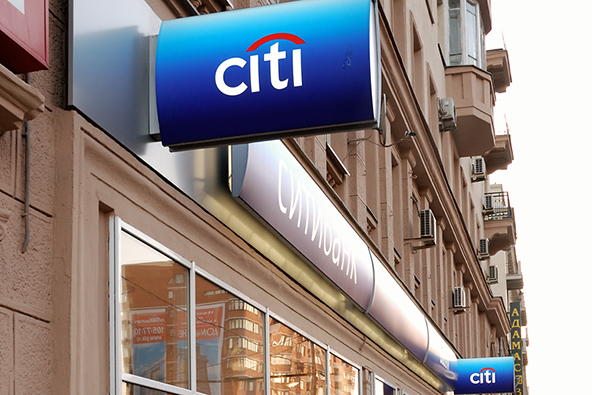How to Raise Profits by Preventing the 3 Most Common Types of Chargebacks

Chargeback prevention has a direct impact on profitability, which manifests itself in two different ways. On that one hand, your processor is charging you a hefty fee for each chargeback, whether successfully disputed by you or not. Additionally, you stand to lose any shipping and handling fees and even the value of the sold item, if returned to you in unsalable condition. On the other hand, and in the high-risk world this is where the real difference is made, your chargeback rate affects the terms and conditions a payment processor will offer you. These include your discount rate, reserve period and payout schedule.
Oh, and I haven’t even mentioned the industry rules, which threaten your merchant account with termination just as soon as your chargeback rate exceeds one percent. In the real world, a mainstream processor is likely to shut you down long before you get anywhere close to that threshold, but let’s leave that aside. The point is that chargebacks are very costly and the important question is what to do to keep them at bay. Well, over the past few months, I have examined in a series of posts all of Visa’s chargeback reason codes and offered some suggestions on how to manage them. Today, I will focus a bit more closely on the three most common types of chargebacks in the e-commerce world: “unauthorized use”, “authorization not obtained” and “recurring transactions”. If you can keep those three under control, you’ll be in good shape.
The 3 Most Common Types of Chargebacks
Here is what causes these chargebacks:
1. Unauthorized use — these chargebacks result from transactions, which the cardholders claim have been processed without their permission. Often, unauthorized transactions are fraudulent, but even more commonly they are the result of a family member using the card without the cardholder’s authorization. Either way, the issuer typically replaces the compromised card. As we will see in a minute, collecting card security information, and implementing fraud-prevention services at the checkout will help reduce this type of chargeback.
2. Authorization not obtained — there are multiple possibilities why that might be the case. For example, the merchant may have attempted to override a declined authorization response (to “force” a transaction, in industry parlance). Alternatively, the merchant may have obtained a voice authorization or key-entered the transaction information, following a decline. This type of chargeback is often the result of multiple partial deposits made on account of a single authorization. As we will see shortly, these chargebacks can be prevented by following best processing practices.
3. Recurring transactions — obviously applicable to a specific set of merchants, these chargebacks are typically the result of transactions processed after the cardholder has cancelled — or claims to have done so — a subscription, membership or some other service, which is provided on an ongoing basis. These chargebacks may also result from installment transactions, but that occurs less frequently, as in such cases both the number and amount of all payments are pre-defined. Honoring cancellation requests and discontinuing payment plans immediately will help prevent these chargebacks, as will the use of clear billing descriptors.
How to Avoid These Chargebacks
Here are the specific best practices you should follow — some of them are applicable to one of the three chargeback types under consideration, while others have a broader impact:
1. Obtain an authorization approval for every transaction.
2. The transaction amount must never exceed the authorized amount.
3. Avoid using voice authorizations, unless absolutely necessary.
4. If an authorization approval is more than seven days old, you are required to reauthorize the transaction, before settling it.
5. Always use the Address Verification Service (AVS) and only process sales after receiving a positive AVS response.
6. Obtain a confirmation of delivery for each shipment.
7. Consider using the associations’ 3-D secure services — Verified By Visa and MasterCard SecureCode as an additional layer of security for online credit and debit card transactions. A 3-D transaction confirmation proves card ownership and protects you from certain types of chargeback.
8. Always ask for the card security codes: Visa’s CVV2, MasterCard’s CVC 2 and Discover’s and American Express’ CID.
9. Process refunds as quickly as possible.
10. Inform your customers by email when a refund has been issued or a membership service cancelled. Notify them of the date the refund was processed and provide a reference number.
11. Make sure your billing descriptor is properly set up and shows your phone number, so that, if there is an issue, your customer can contact you directly rather than calling her card issuer to dispute the transaction.
12. Make available a customer support phone number and email address on your website so that customers can contact you directly. In fact, you cannot open a merchant account without first meeting these requirements — and that is a good thing.
13. Communicate your terms and conditions clearly on your website. Also, they must be present on the same checkout screen that shows the total transaction amount or on one of the website pages your customer is accessing during the checkout process. Require customers to acknowledge acceptance by clicking on an “Agree” or a similar affirmative button.
14. Notify your customers by email of the details of each transaction and indicate that their cards will be charged.
15. For monthly fees or other recurring payments, obtain your customers’ written or electronic signatures, giving you express permission to charge their cards on a regular basis.
16. Make it easy for your customers to discontinue a membership or subscription and cancel a recurring plan — have a “no-questions-asked” policy.
The Takeaway
These are all very basic rules, which everyone should be able to implement without much trouble and yet merchants routinely ignore them. For some of them, like creating clear return and cancellation policies and sticking to these policies, there is no excuse, but things are often more complex than that. For example, many merchants refuse to ask for the security codes, on the belief that doing so may confuse some of their customers or otherwise put them off and lead to lost sales. More broadly, some merchants try to minimize the amount of information they collect at checkout as much as they can, which, they have found, increases their “conversion rates” and reduces “checkout abandonment”. Well, that may well be true, but such practices also lead, inevitably, to higher chargeback rates, which, as we already noted, can quickly get you in big trouble. Still, the decision is yours.
Image credit: Flickr / Josh Kenzer (changes have been made to the original image).


